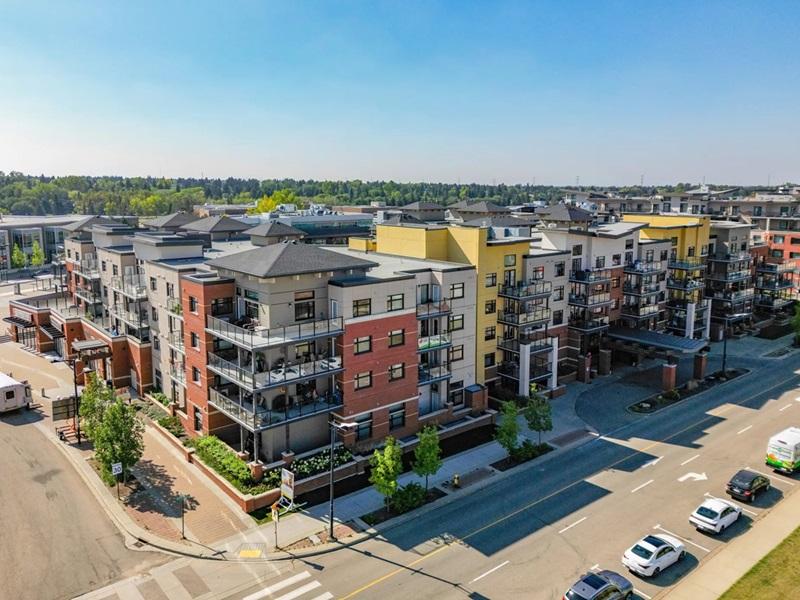We are expecting 1.5 million new Canadians by 2025. Almost half of them will settle in Ontario (approximately 42 per cent), but in Toronto fewer than 30,000 new housing units were completed in the years 2020-2021 combined.
Where are all these people going to live?
We are already grappling with a housing crisis that is not going anywhere any time soon.
With climate catastrophes at our doorstep, finding a sustainable way to accommodate both the planet and the inevitable growth of our cities has become an urgent priority.
Living in well-designed, dense, transit-oriented neighbourhoods is our only chance for success.
These neighbourhoods allow us to stay close to our daily needs, enabling us to walk and bike for errands while also providing reliable public transit options when we need them.
If we had opened up not just our major ‘avenues’ (corridors along major streets that growth is directed to, broadly shown on Map 2 of the Official Plan) but also our neighbourhoods to mid-rise buildings in the 1990s or early 2000s, we could have had the opportunity to create dense, walkable communities without resorting to hyper-densities.
However, for decades, we chose to concentrate density only where it was most politically convenient. As a result, we find ourselves in the midst of a housing shortage at a scale that is difficult to comprehend.
Right now, our only option seems to be the construction of mid and tall buildings — and a lot of them.
Yet, the stigma surrounding tall buildings in Canada remains as potent as ever.
A few months ago, Oakville council postponed the decision to adopt an amendment to the Oakville Midtown Official Plan.
The amendment would support increased density and height allowance for significant developments in a Major Transit Station Area near Oakville GO station.
Projects that, as Markus Boekelman, vice president development of Distrikt Capital suggests, “is perhaps one of the most exciting opportunities for high-density transit-based community development in the province.”
A costly delay
Now the development is delayed for at least another year. A delay that could cost people struggling to find housing tens of thousands of dollars.
Unfortunately, this is just one of many similar examples.
In an era of rapid urbanization, here in Canada we still have to debate whether we can refer to a municipality as sizeable as Oakville – with a population exceeding 210,000 – as a city, or whether we should continue labeling it a “town” to commemorate the “small town” ambiance it embraced long ago, when its population numbered fewer than 100,000 residents.
In the midst of such a massive housing shortage, creating “higher density, tall-building urban growth centres, focused around existing major transit station infrastructure,” as Boekelman points out, “are extraordinary community building opportunities to meet housing demand growth targets.
"Also, by concentrating population growth and housing demands within higher density transit communities, efficiencies are created for livable environments that rely less on commuting and are more focused on a local lifestyle context.”
Despite the urgent need to create well-designed high-density neighbourhoods as quickly as possible, the stigma of “harmful tall buildings” is pushing back against this housing solution that our cities so desperately need.
We have to change this trend, and the time is already up. So, let’s debunk three of the most common misconceptions about tall buildings.
“Tall buildings ruin the character of our neighbourhoods and cast shadows on our backyards”
One of the most common concerns about high-rise buildings is how they would affect the feel and character of our cities and neighbourhoods. Tall buildings could be landmarks for how we perceive a city, maybe because we can see them from far distances.
But, the fact is that we experience our cities in an entirely different way.
As we walk along the streets, what truly shapes our experience is how the buildings are designed at our eye level, how the streets are designed to accommodate our human scale and speed, how well we can access and navigate our environment and what activities and opportunities are offered to us as users of the public realm.
As per the shadow argument – in our winter months, the sun is low and even low-rise buildings cast long shadows. And most importantly – what do we prioritize: private backyards or a place to call "home"?
“Tall buildings are bad for the environment”
The environmental impact of constructing tall buildings is greater only when calculating on a per-square-foot basis, rather than a per-person basis.
Factor in the substantial impact of inefficient land use in low-density developments, and the answer becomes clear: tall buildings contribute to a more sustainable urban environment, because they allow us to create density near transit, optimize the sustainable use of land, preserve more green spaces, and reduce the need for extensive commuting.
“Tall buildings are bad for our health and children”
Eighty-seven per cent of people in Greater Toronto Area rely on their cars on a daily basis, almost three times higher than New York. Our teens have to learn how to drive because there is no safe way for them to get around independently.
The way our cities are developed forces us to spend thousands of hours of our lives confined to a car getting from one place to another, without moving our bodies or enjoying a human interaction with others.
It is not surprising then, that obesity and social isolation are on the rise.
A promising solution is to design for walkability. To do so, we need density and we need to build it upwards.
Tall buildings allow us to bring in more people, close enough to financially support the creation of walkable neighbourhoods served by reliable public transit, and bustling with social and economic activities.
Neighbourhoods that, as Jeff Speck said in his General Theory of Walkability, offer us useful, safe, comfortable and interesting urban walks, no matter our age, income, or physical abilities.
Dense, transit-based developments, as Boekelman remarks, “are placemaking destinations that also attract visitors and contribute to the social, cultural and economic activation of a complete community and the broader region.”
Contrary to what some people would think, that density near public transit would only warehouse commuters and take people out of the community, a well-designed, dense, transit-oriented neighbourhood that accommodates the needs of all household types and sizes will not only create opportunities for the immediate community, it will be a destination attracting more people and economic opportunities from other areas of the city.
Seeking more perspective about this issue? Embedded here is a short video Blonder posted recently to her LinkedIn feed.










